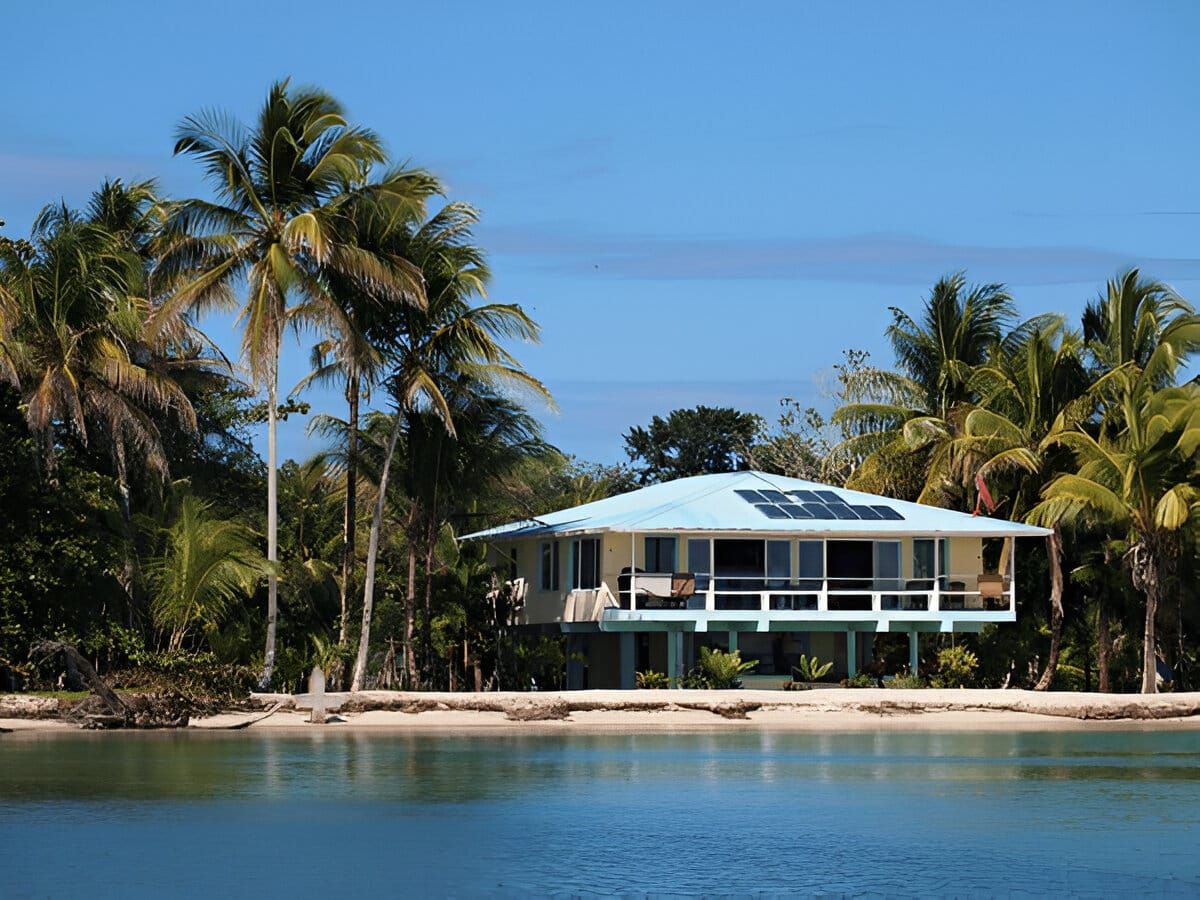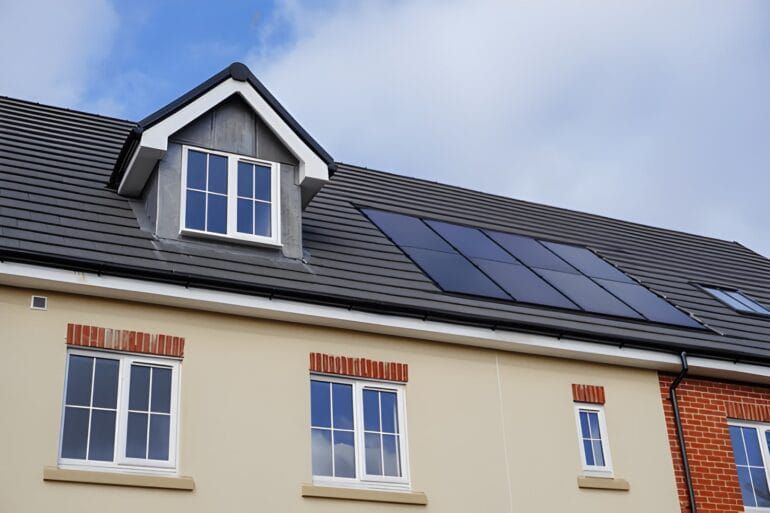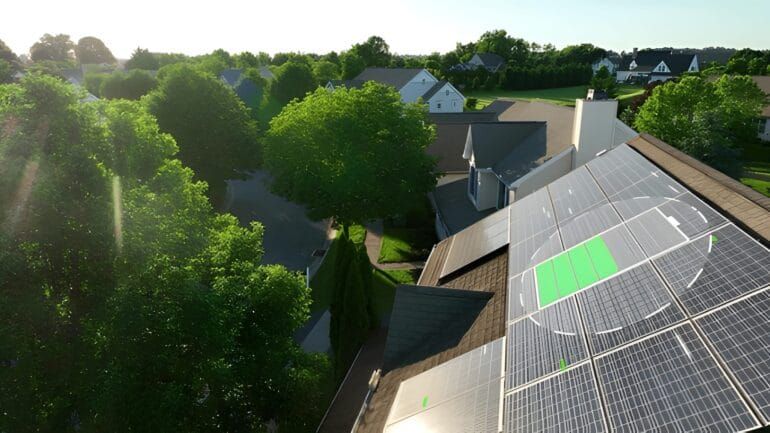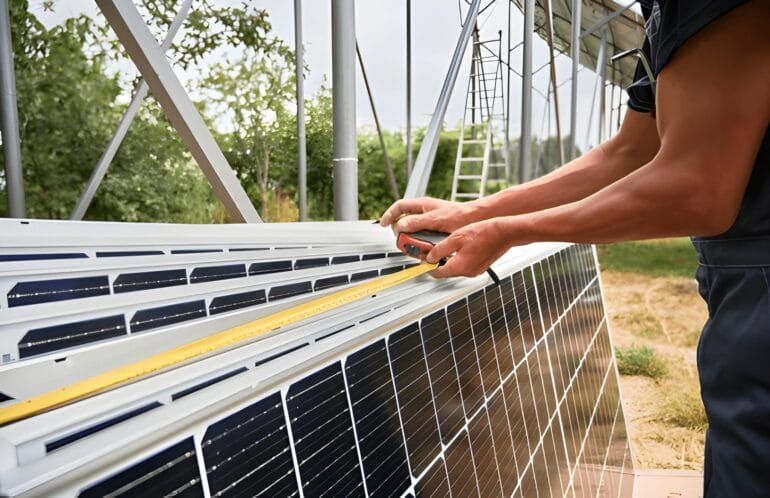Coastal living in Western Australia has numerous lifestyle advantages—breathtaking ocean vistas, tranquil environment, and sea breezes that bring relief. But for residents, the coastal climate also poses special challenges, particularly in terms of energy infrastructure. Salt-deposited air, gusty winds, and extreme weather conditions can degrade the functionality and longevity of solar systems. Therefore, it is important to select the correct solar coastal homes WA solutions in order to guarantee long-term efficiency, savings, and sustainability.
In this comprehensive guide, we’ll explore how to select the best solar energy systems for coastal regions, the importance of material durability, design considerations, and how solar energy storage is transforming household independence. We’ll also dive into the latest innovations, including corrosion-proof technology, and provide practical advice for Western Australian homeowners considering solar for seaside living.
Solar Coastal Homes WA : Why Need Special Solar Considerations
Coastal areas in Western Australia experience high salt exposure, humidity, and high winds. These conditions cause the aging of normal solar panels to progress faster, corroding electrical components and compromising structural supports. This is why salt-resistant solar panels WA are needed for long-term durability and return on investment.
In contrast to homes in the interior, coastal home solar systems WA are subject to weather conditions that stress both panels and associated inverters. If inadequately planned, such systems tend to deteriorate rapidly in efficiency, resulting in increased maintenance expenses and lowered lifespan for the entire system.
Solar Panels and Salt Corrosion: The Science Explained
Sea breeze-borne salt particles are very corrosive. Once such particles settle on metal fittings and panels, they combine with humidity, resulting in rust and oxidation. Typical systems have visible degradation within a couple of years. Here steps in corrosion-proof solar panels WA.
Manufacturers have also come up with sophisticated coating technologies and reinforced glass that shield panels from salt mist corrosion. These coatings also enhance panel cleaning, and therefore, ensure maximum light absorption and power generation. Inverters and wiring in solar installation coastal Western Australia are also designed specifically with protective casings and weatherproof seals to deal with coastal wear and tear.
How to Choose the Right Solar System Size for Coastal Homes
Correct system sizing is one of the critical choices in solar coastal houses WA design. Large systems tend to produce excess power that is sold to the grid at low feed-in tariffs, lowering return on investment.
For cost-effectiveness, systems can be sized against the homeowner’s daytime energy use. For instance:
- A household that uses approximately 20 kWh a day might appreciate that a 6kW system is the most efficient and cost-effective.
- When energy demand is high during mornings and afternoons, battery storage can be combined with the system to achieve maximum independence.
Employing smart resources such as a solar payback calculator makes determining the optimal system size of coastal living possible.
Shifting Towards Energy Independence with Storage
One of the significant solar energy trends in the past decade has been the transition from basic grid-connected systems to combined solar and battery storage. This is especially advantageous for WA coastal home solar systems, where grid dependability can occasionally be affected by storms or power outages.
Solar Energy Storage (SES) enables homeowners to:
- Store excess day-time solar electricity to use at night.
- Minimize use of grid power at peak tariff times.
- Become more energy independent, even in distant coastal locations.
As more WA homeowners turn to solar for coastal homes WA, battery systems will likely become the norm, alleviating strain on the wider network while providing reassurance during severe weather events.
The Multi-Level Perspective on Solar Transition in WA
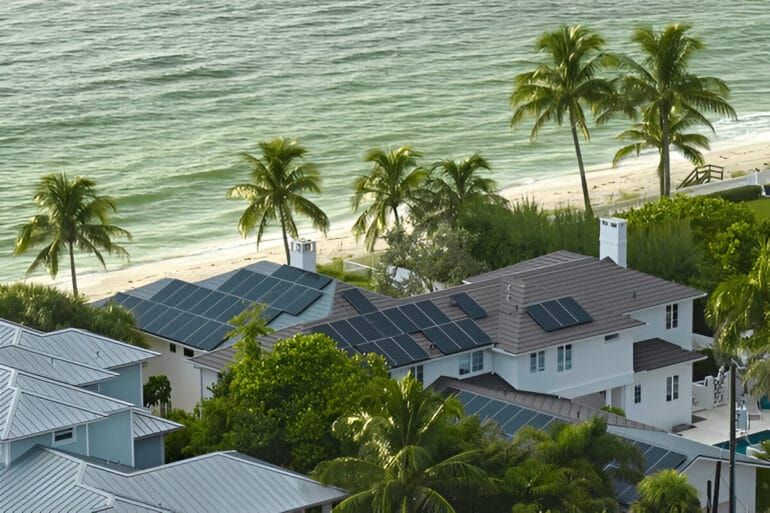
The use of solar power for coastal dwelling is a part of a large socio-technical transformation. Based on the Multi-Level Perspective (MLP) framework, we can better comprehend this transition:
- Micro (Niche Innovations): Salt-resistant solar panels WA and intelligent inverters are examples of niche innovations that address distinct environmental conditions of coastal areas.
- Meso (Regime): Government policy and utilities are influencing the integration of solar into the coastal grid, with greater focus on domestic battery storage.
- Macro (Landscape): National renewable energy goals and global climate agendas are driving WA to adopt renewable options aggressively, particularly in high-penetration areas like coastal suburbs.
These levels intersect to drive the uptake of solar installation coastal Western Australia more mainstream than ever before.
Advantages of Solar for Seaside Homes WA
Solar investment on seaside homes WA provides several advantages:
- Lower Energy Bills: Seafront houses tend to use more electricity for ventilation, cooling, and heating. Solar systems pay back these expenses efficiently.
- Grid Stability: With the power generated and stored locally, coastal solar homes help stabilize the local grid.
- Environmental Benefits: With increasing concern about climate change, seafront home solar systems WA help minimize carbon footprints.
- High Property Value: Houses with corrosion-resistant solar panels WA and new storage systems are more desirable to potential buyers.
Role of WA in Making Australia a Solar Leader
Western Australia is already a solar leader. With more than 455,000 household solar systems installed by 2024, the rooftops of the state now function as its biggest power station. Per capita, WA leads much of Australia in installed capacity, with around 815 W of small-scale solar per capita.
For WA solar coastal homes, the high rate of adoption means strong community awareness, readily available rebates, and established installer know-how.
Challenges to Coastal Solar Adoption
Despite the advantages, there are also issues to overcome:
- Grid Instability: Very high levels of solar penetration on the coast have the potential to affect voltage and frequency control.
- Curtailment: Under conditions of overproduction, small systems less than 5kW can be controlled remotely, curtailing their output.
- Maintenance Requirements: Salt deposit needs regular cleaning and checking to maintain constant efficiency.
- Initial Costs: Even with rebates and financing, the upfront cost may be a deterrent for some homeowners.
Picking qualified providers for solar installation coastal Western Australia guarantees overcoming these issues through system design and maintenance strategies.
Maintenance and Cleaning Factors
Maintenance regularly is crucial to maintaining coastal home solar systems WA in optimal performance. Homeowners ought to:
- Schedule yearly check-ups.
- Clean panels every half-year to scrape off salt buildup.
- Inspect inverters for a seal and function.
- Test battery systems for efficiency and safety.
Some companies also provide solar panel cleaning, which can be especially beneficial for coastal properties that experience salt spray.
Financial Incentives and Payback in WA
Government rebates, subsidies, and low-cost loans have facilitated solar uptake in WA. Although feed-in tariffs have fallen dramatically, the most favorable returns are now from self-consumption and intelligent system sizing.
Homeowners installing corrosion-resistant solar panels WA and combining them with storage realize payback periods drop to 4–7 years, based on system size and household usage. This makes solar investment for beachside homes WA one of the most financially beneficial energy upgrades on offer.
Future of Solar in Coastal Western Australia
The future of solar power along the coasts of Western Australia will be more dynamic and community-oriented. As technology advances, coastal homes WA will no longer remain standalone energy generators but as integrated contributors to a smarter, more resilient grid.
One such major development is smart grid integration, whereby digital technology enables homes to speak with the grid in real time. This enables the distribution of energy more effectively, minimizing wastage and leveling supply, particularly in seascapes where there is high solar penetration. Peer-to-peer energy trading is another upsurge, where homes that produce excess solar power can sell or share electricity directly with neighbors. Not only does this lower reliance on conventional utilities, but it also makes community energy networks stronger.
Moreover, community solar gardens are becoming popular with a shared approach for coastal homes without appropriate rooftops. The projects allow several homes to share a single large solar array.
As more homeowners adopt salt-resistant solar panels WA, coastal systems will be more resilient and sustainable. Collectively, these technologies hold out the promise of a future when seaside homes are energy independent but work together to enhance a cleaner, more reliable coastal energy grid.
Conclusion: Why Easy Solar is the Right Partner
To switch to solar power for coastal life in Western Australia, there is a need for careful planning, long-lasting materials, and the right size of the system. Whether it is salt-resistant solar panels WA or total solar installation coastal Western Australia, the right solutions provide long-term performance and financial protection.
Easy Solar is different by providing:
- Residential and commercial solar systems designed for coastal requirements.
- Improved inverters and battery storage for energy autonomy.
- Corrosion-proof technology for coastal properties.
- Solar hot water systems, cleaning, and maintenance.
- Clear financing and advice on government rebates.
For homeowners considering solar coastal houses WA, Easy Solar offers not only technology, but a partner of reliability to construct energy resilience, save money, and help a cleaner future.
